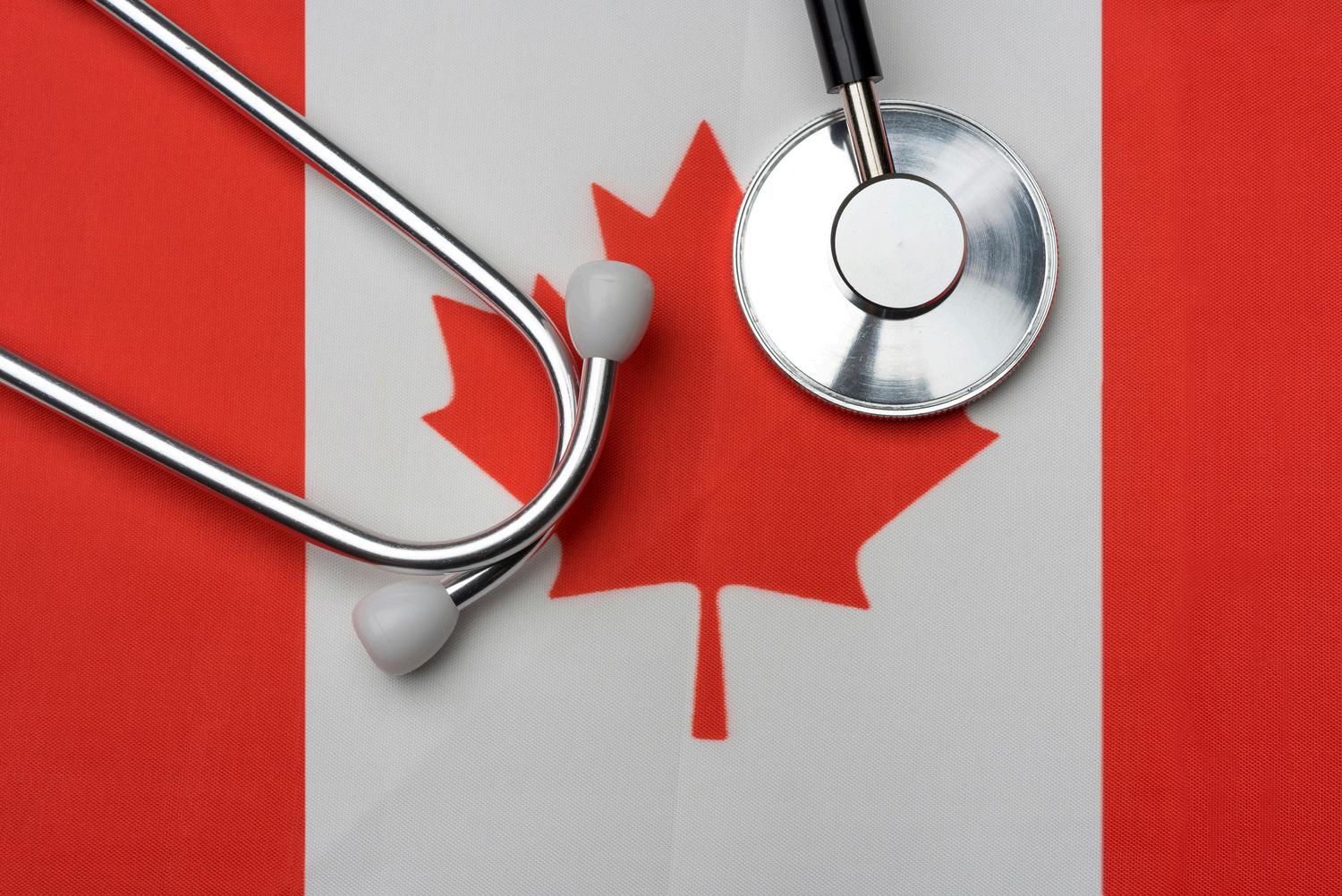
4 minute read
Patient Advocacy and Patient Rights: A Crucial Partnership in the Canadian Healthcare
by Cheryl A Petruk, MBA. B.Mgt
The Canadian healthcare system, built on the principles of universality, accessibility, and equity, is often praised globally as a model of public health delivery.
At the heart of this system lies the recognition of patient rights—a framework designed to ensure that individuals receive fair, respectful, andinformedcare.
However, ensuring these rights are upheld requires more than legislative and ethical commitments; it requires the active presence of patient advocacy. Patient advocacy is the bridge that connects patient rights to meaningful healthcare experiences, empowering individualstoaccesscare,voiceconcerns,andinfluencesystem-wideimprovements.
This article will explore the critical role of patient advocacy in advancing patient rights, addressing healthcare inequities, and improving outcomes within the Canadian healthcare system. It will also examine challenges and propose ways to strengthen the intersection of advocacyandrightstoachieveequitablehealthcareforall.
UnderstandingPatientRightsinCanada
PatientrightsinCanadaarenotcodifiedunderasinglenationallaw.Instead,theyareprotected andoutlinedthroughacombinationoffederallegislation,provincialhealthacts,andethical guidelines.
Keyrightsinclude:
TheRighttoAccessHealthcare
AsoutlinedintheCanadaHealthAct(CHA),allresidentshaveaccesstomedicallynecessary serviceswithoutfinancialbarriers.
TheRighttoInformedConsent
Patientshavetherighttobeinformedabouttheircareoptions,potentialrisks,andbenefitsbefore consentingtoanytreatment.
TheRighttoPrivacyandConfidentiality
Healthinformationmustbeprotectedunderlawslikeprovincialprivacyactsandfederal legislationsuchasthePersonalInformationProtectionandElectronicDocumentsAct(PIPEDA).
TheRighttoRespectandNon-Discrimination
Patients are entitled to care that is free from discrimination based on race, gender, socioeconomic status,oranyotherpersonalcharacteristic.
TheRighttoComplainandSeekRedress
Patients can file complaints through healthcare organizations, provincial ombudspersons, or health regulatory bodies if their rights are violated. While these rights are foundational, challenges like systemic inequities, lack of awareness, and gaps in accountability often prevent patients from exercisingthemeffectively.Hereiswherepatientadvocacybecomesindispensable.
Patient Advocacy and Patient Rights: A Crucial Partnership in the Canadian
TheRoleofPatientAdvocacyinUpholdingPatientRights
Patient advocacy refers to the actions, policies, and initiatives that promote and protect the interests, voices, and rights of patients. Whether carried out by healthcare professionals, organizations, or individual advocates, it empowers patients to navigate the healthcare system whileensuringtheirrightsarerespectedandupheld
1.BridgingtheGapBetweenPatientsandtheSystem
The Canadian healthcare system can be overwhelming, especially for patients navigating complex medicalconditions,longwaittimes,orfragmentedcare.Advocacyplaysakeyrolein:
Navigating the System: Advocates help patients access specialists, coordinate care, and navigate administrativebarrierslikereferralsandinsuranceclaims.
ExplainingRights:Manypatientsareunawareoftheirrights.Advocateseducatepatients,ensuring theyunderstandtheirentitlementtoinformedconsent,respect,andaccesstoservices.
Example:Incasesofrarediseases,organizationsliketheCanadianOrganizationforRareDisorders (CORD) advocate for timely diagnoses, access to therapies, and policies that address the unique needsofrarediseasepatients



2.EmpoweringVulnerablePopulations
While Canada’s healthcare system is designed to provide equitable care, systemic inequities persist Marginalized groups, including Indigenous communities, new immigrants, racial minorities, and people with disabilities, oftenfacebarrierstocare.
Indigenous Health Advocacy: Indigenous patients have historically experienced systemic racism and healthcare disparities Initiatives like Jordan’s Principle ensure that Indigenous children receive the care they need without jurisdictionaldisputes
Immigrant Advocacy: Newcomers may struggle with language barriers, cultural differences, and unfamiliarity with the healthcare system. Advocacy organizations ensure they access culturally sensitive care and interpretationservices
Case in Point: Programs such as the First Nations Health Authority (FNHA) in British Columbia advocate for Indigenous health rights while providing culturally safe healthcareresources.




3.StrengtheningPatientVoicesinDecision-Making
Patient-centered care is a core principle of modern healthcare, emphasizing the patient’s role in decision-making processes. Advocacy ensures that patients are not passive recipients of carebutactiveparticipantsintheirhealthjourney.
Shared Decision-Making: Advocacy encourages collaboration between patients and healthcare providers, where patients’ values,concerns,andpreferencesinformtreatmentplans
Representation in Policy: Patient advocates often contribute to policy discussions and healthcare reforms, ensuring patient perspectivesareheard.
Example: Patient partners and advocates are increasingly included in research, clinical trials, and hospital boards to informdecision-makingbasedonlivedexperiences.
4. Addressing Gaps in Accountability
While Canadian healthcare organizations are bound by ethical and legal obligations, lapses in care or breaches of patient rights can occur. Advocacy plays a critical role in addressing these gaps by:
Filing Complaints: Advocates assist patients in voicing concerns to provincial health authorities, ombudspersons, or regulatory bodies.
Improving Quality of Care: By highlighting recurring issues, advocacy drives systemic improvements and accountability. Example: The Office of the Patient Ombudsman in Ontario provides a formal avenue for patients to seek redress and push for reforms based on complaint trends.
ChallengestoEffectivePatientAdvocacyinCanada
Whileadvocacyisessential,itfacesseveralchallengesintheCanadianhealthcarelandscape:
1.LimitedResourcesforAdvocacyOrganizations
Many advocacy groups rely on limited funding, restricting their ability to reach all patients who needsupport.ThisisparticularlyevidentinunderfundedruralorIndigenouscommunities.
2.HealthSystemFragmentation
The decentralized nature of Canada’s healthcare system creates inconsistencies in patient rightsenforcementandadvocacyprogramsacrossprovincesandterritories
3.LackofAwareness
Patients often lack awareness about their rights or available advocacy resources. This gap preventsindividualsfromaccessingthecareandsupporttheyneed.
4.PowerImbalances
Power dynamics between healthcare providers and patients can discourage advocacy, particularlywhenpatientsfearretaliationforspeakingoutaboutinadequatecare.
Patient Advocacy and Patient Rights: A Crucial Partnership in the Canadian Healthcare
Key Advocacy Initiatives in Canada
Despite these challenges, several successful advocacy efforts have demonstrated the power of combining advocacy with patient rights:
1. The Canadian Cancer Society
This organization advocates for cancer patients’ access to treatment, funding for research, and improved palliative care. Their work has influenced government policies and ensured that cancer patients’ voices are represented at all levels of decision-making.
2. Mental Health Advocacy
Organizations like the Canadian Mental Health Association (CMHA) have led campaigns to reduce stigma, improve mental health resources, and advocate for policy changes to increase access to mental health services.
3. Rare Disease Advocacy
Groups like CORD work with policymakers, researchers, and healthcare providers to improve diagnosis, treatment options, and patient support for rare disease patients.
4. Indigenous Health Advocacy
The Assembly of First Nations (AFN) and the FNHA have been instrumental in advocating for culturally safe care and addressing healthcare inequities among Indigenous communities.




TheFutureofPatientAdvocacyinCanada
To further strengthen patient advocacy and its role in upholding patient rights,Canadamusttakethefollowingsteps:
1.IncreaseSupportforAdvocacyOrganizations
Governments and private stakeholders must provide funding to advocacy groups, enabling them to expand their reach and support vulnerablepopulationseffectively
2.EnhancePatientEducation
Healthcare providers and institutions should prioritize educating patients about their rights and available advocacy resources. Materials shouldbeaccessible,culturallyrelevant,andmultilingual.
3.AddressSystemicInequities
Advocacyeffortsmustcontinuetofocusoneliminatingsystemicbarriers to care, particularly for Indigenous, immigrant, and low-income populations.
4.StrengthenLegalProtections
Canada can consider national legislation that codifies patient rights uniformly across all provinces and territories, strengthening enforcementandaccountabilitymechanisms
5.IntegrateAdvocacyintoHealthcareDelivery
Hospitals and healthcare providers should incorporate professional patientadvocatesintocareteamstoensurepatientsreceivethesupport theyneedthroughouttheirhealthcarejourneys.
Patient Advocacy and Patient Rights: A Crucial Partnership in the Canadian Healthcare
Patient advocacy and patient rights are inextricably linked in Canada’s healthcare context. While patient rights provide the ethical and legal foundation for equitable care, advocacy ensures that these rights are upheld, respected, and acted upon. Advocacy empowers individuals to navigate the system, amplifies the voices of marginalized populations, and drives systemic change to addresshealthcareinequities.
In a country that prides itself on the values of universality, accessibility, and compassion, patient advocacy is not just an added support it is an essential mechanism for achieving a healthcare system that truly serves every Canadian. By investing in advocacy, strengthening education, and addressing systemic challenges, Canada can continue to be a global leader in patient-centered care,wheretherightsofeveryindividualarenotonlyrecognizedbutactivelyprotected.











